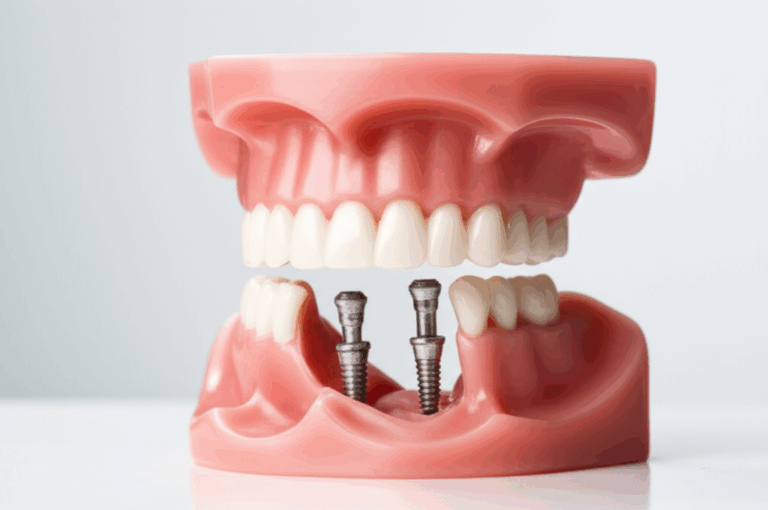
How Much Are Full Arch Dental Implants
Are you wondering how much a new smile really costs? Full arch dental implants can seem expensive, but knowing what you’re actually paying for helps you plan, save, or find the choice that fits your needs and budget. I’ve been in your shoes—searching online and calling dental offices, just trying to get clear answers. This article breaks things down—from where the cost comes from, to extra fees you might not expect. If you want to bite into a steak again or feel good about your smile, keep reading! I’ll make things simple, so you can choose the right care without feeling lost or tricked.
Article Outline
- What Are Full Arch Dental Implants?
- Why Do People Need Full Arch Dental Implants?
- What’s Included in the Cost of Full Arch Implants?
- How Much Does a Full Arch Dental Implant Cost?
- Why Do Prices Vary So Much?
- Does Insurance Cover Full Arch Dental Implants?
- Are Cheaper Options Like china dental lab or 3d dental lab Safe?
- Zirconia vs. Emax vs. Acrylic: Does Material Change the Price?
- Am I a Good Candidate for Full Arch Implants?
- Is the Investment Worth It? What’s the Real Value?
1. What Are Full Arch Dental Implants?
Let’s begin with the basics. Full arch dental implants are basically like getting all new teeth on your top or bottom jaw—or even both. Instead of replacing each tooth one by one, your dentist will put four to six strong posts (like tiny metal roots) in your jaw and attach a full set of teeth to them.
When I first learned about these, I imagined movie stars getting perfect teeth overnight. It’s not quite like that, but it comes close. You get fixed teeth that won’t move or fall out when you eat, talk, or laugh. If you’re tired of dentures slipping or gaps in your mouth, a full arch could help you a lot.
You’ll hear names like “All-on-4” or “All-on-6”—that just means how many posts hold up your new teeth. The steps use some new technology—like 3D lab work and skilled dentists—but the goal is a simple, solid smile.
2. Why Do People Need Full Arch Dental Implants?
Missing teeth aren’t only about how you look. Chewing can be tough. Some words are hard to say. Sometimes there’s pain or infections that make life hard. My own dad had trouble with his dentures shifting while eating, so he always picked soft foods to avoid an accident.
That’s the deal—a life where your teeth hold you back. You might feel less sure of yourself or not want to join friends and family as much. Your jawbone can shrink under missing teeth, changing the shape of your face. Maybe you tried fixes or part dentures, but they didn’t work out.
Full arch dental implants can fix all these problems, giving you new teeth that feel real and strong. Eat and talk like you used to. It’s hard to put a price on confidence! But yes, the money part is why most of us want to know more.
3. What’s Included in the Cost of Full Arch Implants?
This is where most people are surprised. The first price I heard for full arch implants almost knocked me out! But when you look closer, it makes more sense where that money goes.
It’s not just for metal pieces and false teeth. The plan needs a lot of work—3D scans, molds, sometimes time in a special zirconia or emax lab to make your teeth fit just right. The surgery isn’t quick or simple. It covers putting you to sleep, placing the posts, making your new teeth, and lots of visits before and after.
The cost usually covers the first checkup, X-rays, lab work, surgery, temporary teeth, your real new teeth, making sure they fit, and check-ins later. Some places cover extras like adding bone or giving you medicine to relax; others make you pay more for those. Every part adds up—kind of like building a house from the ground up.
4. How Much Does a Full Arch Dental Implant Cost?
You want real numbers, so here they are. In the US, a full arch dental implant starts at about $15,000 and can go up to $30,000 or more for one jaw. If you need both top and bottom done, the price can double. That’s the kind of money you’d spend on a car—or maybe even a small house in some places!
From what I found while researching, the cost changes mostly based on the materials, dentist’s skill, and lab fees. Some places use a local 3D lab, others use a lab in China to save. Sometimes cheaper means trouble if the new teeth break or fit badly.
Travel can matter too. Some people go to countries like Mexico for lower prices that sound amazing. Sometimes they work, sometimes they don’t. Don’t pick just based on price—know what you’re getting.
5. Why Do Prices Vary So Much?
I called five places and got five different answers. Pretty frustrating! The price of implants depends on a few big things: where you live, how much experience the dentist has, what kind of material they use, and if you need extra steps done.
For example, a bridge made in a zirconia lab can cost more than acrylic but can last much longer and look nice. An emax lab charges more too because you get teeth that look natural, but you pay for that look. Big cities are often pricier than smaller towns.
Some clinics save money by ordering from a china dental lab. Sometimes this is fine, but sometimes people have problems with slow shipping or weak parts. Always ask what’s included for your price. Going cheap could mean skipping important steps.
6. Does Insurance Cover Full Arch Dental Implants?
Hoping insurance will pay for everything? Sorry, but most dental plans count implants as “cosmetic” and only help a little bit—maybe with part of the bridge, but not the main surgery or good materials. You might get $1,000 or $2,000 back, which doesn’t go very far.
That’s hard for most people, since they think insurance will save them. Most end up paying from their own pocket. If you keep fixing old teeth, having pain or eating bad food, the long-term cost goes up even more.
Sometimes, if you lost teeth from an injury or sickness, medical insurance might help. That’s pretty rare. Many people use payment plans or special health savings accounts to stretch the cost over time if insurance says no.
7. Are Cheaper Options Like China Dental Lab or 3D Dental Lab Safe?
We all want to save money! A lot of clinics now use new 3D labs or order from China to offer lower prices. New machines can make your new teeth faster and sometimes for less money than old ways.
Still, you need to be careful. Not every lab follows the rules or makes strong teeth. I’ve seen stories where people got new teeth that didn’t fit, changed color, or chipped fast. That means more trips to the dentist, more spending, or starting over.
A good office will tell you where your teeth are made. Ask if they use safety-tested materials. Sometimes a 3D lab in the US is just as cheap as one in another country—but has better checks. Feeling sure about the quality can be more important than saving a few dollars.
8. Zirconia vs. Emax vs. Acrylic: Does Material Change the Price?
It can be confusing to choose. Your dentist might offer new teeth from a zirconia lab, an emax lab, or regular acrylic (plastic). Each has good and bad sides, and each costs differently.
Zirconia is the best you can get. It’s strong, keeps its color, and looks real—but you pay more for it. Emax is also nice, made from a kind of glass-ceramic. It looks bright and real, but it’s not as tough as zirconia and is still expensive. Acrylic is the cheapest, but it doesn’t last as long and stains easier.
Your dentist should help you decide. Stronger, better materials might save you money later, since they break less. Sometimes acrylic is okay while you save or wait for better teeth in the future.
9. Am I a Good Candidate for Full Arch Implants?
Not everyone can get these teeth. Good candidates have enough healthy jawbone, don’t have bad health problems like uncontrolled diabetes, don’t smoke a lot, and can take care of their teeth after surgery.
I was nervous I wouldn’t be able to get implants, but dentists can do amazing things now. If your bone isn’t good enough, they might add more bone first. Age usually isn’t a problem—some people in their 80s get new smiles thanks to new tools and ways to help healing.
If you’re not sure, start with a checkup. Many dental offices give free or low-cost visits to help you see if you’re able to get implants or what needs fixing first.
10. Is the Investment Worth It? What’s the Real Value?
This is the hard part. I’ve seen people use their life’s savings, and others walk away, thinking it’s not worth it. But what do you really get?
Full arch dental implants are not just about looking good. They let you chew better, keep your jawbone healthy, keep your face full, and help you talk or laugh without worrying. With better teeth, you feel good, eat what you like, and usually get healthier since you can eat more foods.
The price is high, there’s no doubt. If you need help, it’s better to save or wait for a payment plan rather than rushing into cheap or bad dental care. The cheapest solution now could cost you double if it fails. Look at material, clinic skill, and reviews before you choose. The value is not just about money—it’s about having a good life with strong teeth for years.
FAQ
Q: Can I finance full arch dental implants?
Most clinics offer payment plans, and outside companies can help you pay over months or years.
Q: Do implants ever need replacing?
The posts (implants) can last your whole life if you care for them. But the teeth on top might need changing after 10-15 years.
Q: Is it painful to get implants?
You’ll be numbed during the surgery, and most people only have a few days of soreness after. Over-the-counter pain medicine usually works well, and most say it’s not as bad as they thought.
Most Important Things to Remember
- Full arch dental implants give you all new teeth on one jaw—they cost a lot, but can change your life.
- Prices range from $15,000 to $30,000 for each jaw in the US, depending on the type of teeth, where you go, and who does the work.
- Insurance almost never pays the whole cost—expect to pay most yourself.
- Material matters: Zirconia and Emax are stronger and look nicer than acrylic, but cost more.
- Cheap options (like a china dental lab or 3D lab) can save money but don’t always give good results—ask questions.
- Pick your dentist carefully. Spending a little more can save you money and worry later.
- You can usually get payment plans—ask your office for help with costs.
- Implants are an investment. Eating, talking, confidence, and comfort can all improve—and that’s priceless.
- Compare, ask, and research before saying yes—everyone’s mouth is different.
- Taking care of implants is important—brush, floss, and get checkups to keep your new teeth strong for years.
Thinking about full arch dental implants is a big choice. Don’t settle for less—your smile matters!








